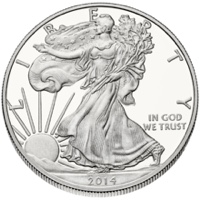 Howard Marks released another Oaktree memo earlier this month that somewhat coincides with this weekend’s Super Bowl. Inside, he revisited the New York Post NFL Bettor’s Guide, a panel of “experts” offering their opinion of winning picks for each NFL game during the season. The picks are relative to the point spread offered by the bookmakers. The experts further specify up to three “best bets” each week.
Howard Marks released another Oaktree memo earlier this month that somewhat coincides with this weekend’s Super Bowl. Inside, he revisited the New York Post NFL Bettor’s Guide, a panel of “experts” offering their opinion of winning picks for each NFL game during the season. The picks are relative to the point spread offered by the bookmakers. The experts further specify up to three “best bets” each week.
Here were the results after the 2015 NFL Season (from last year’s memo):

Here were the overall results after the 2016 NFL Season:
- The best picker was right 55.1% of the time.
- The worst picker was right 48.8% of the time.
- On average the pickers were right 51.6% of the time.
In terms of the “best bets” only:
- The best picker was right 62.7% of the time.
- The worst picker was right 43.1% of the time.
- On average the pickers were right 54.0% of the time.
Here’s my take on the observations in the memo:
All results cluster closely around 50/50. A blindfolded squirrel (or me flipping a coin) could easily blend in with this panel of “experts”. Some do a bit better than 50/50 (but not much better), while others do a bit worse (but not much worse). This is exactly what the distribution of a high number of coin tosses looks like. It’s very hard to consistently beat the point spread created by the “market” consisting of other bettors.
Don’t forget the vigorish. When you place a bet with a sports book, they charge a fee (“the vig”) for their services. For example, you may have to bet $110 to win $100. That translates to a roughly 5% commission on each bet. Even if you were right on average 54% of the time, you would still lose money in the long run after fees.
These are results from people who are paid to observe, analyze, and write about football games. Yet their performance could be mostly explained by luck, and even any slight outperformance on average is more than negated by fees.
In terms of investing, there are also many “experts” willing to offer their opinion on winning stock picks or other financial forecasts. Most will be average, or perhaps even slightly above average. However, history (and common sense math) shows that their performance won’t be good enough to offset the higher fees that they charge. In addition, there is no surefire way to find these above-average pickers ahead of time (using past performance doesn’t work). Due the presence of such fees, you can guarantee yourself “above average” net results by simply buying low-cost index funds.
I’m not one of those people that completely dismiss the possibility of skill in investing, but you if do want to go that route you should be realistic. If you’re picking your own stocks, keep an honest tab on your performance. If a mutual fund is charging 1.5% annually today to actively manage US stocks, it is rather unlikely that it will outperform a low-cost US stock index fund in the long term. On the other hand, an actively managed mutual fund that charges 0.15% annually and has various other positive factors has a more reasonable chance of slight outperformance. However, at the same time you must also accept the possibility of slight underperformance.
 The Best Credit Card Bonus Offers – 2025
The Best Credit Card Bonus Offers – 2025 Big List of Free Stocks from Brokerage Apps
Big List of Free Stocks from Brokerage Apps Best Interest Rates on Cash - 2025
Best Interest Rates on Cash - 2025 Free Credit Scores x 3 + Free Credit Monitoring
Free Credit Scores x 3 + Free Credit Monitoring Best No Fee 0% APR Balance Transfer Offers
Best No Fee 0% APR Balance Transfer Offers Little-Known Cellular Data Plans That Can Save Big Money
Little-Known Cellular Data Plans That Can Save Big Money How To Haggle Your Cable or Direct TV Bill
How To Haggle Your Cable or Direct TV Bill Big List of Free Consumer Data Reports (Credit, Rent, Work)
Big List of Free Consumer Data Reports (Credit, Rent, Work)
It’s funny the amount of ink and idle talk of sports is spent on a 50/50 ‘guess’.
The only ones getting paid to do so make the real money!